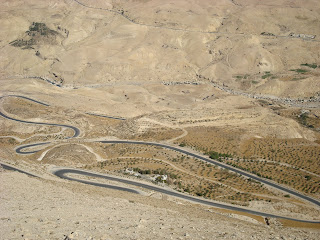

Historical importance, deep roots in religion and uniqueness of... everything are the main reasons why we are traveling to Turkey, Jordan and Egypt.

























En esta ciudad San Pablo fue encarcelado por atentar contra los Dioses griegos. Tambien fue aqui que vivieron sus ultımos Dıas San Juan y la Virgen Maria. El primero esta enterrado muy cerca del templo de artemisa se le contruyo una catedral la cual tambien esta en ruinas debido a un terremoto en la edad medıa.
Tambien fuimos a visitar la casa de la Virgen Maria, lugar de peregrinaje de Cristianos y Musulmanes. La casa esta "escondida" en medio de un bosque el cual esta en un monte enfrente de la antigua ciudad de Efeso. Este lugar fue descubıerto hace 100 anos aprox. Al agua del manantıal, de donde La Virgen bebia agua, se le atribuyen propiedades curativas.
Tanto la casa como la tumba de San Juan son lugares de mucho caracter que emanan mucha paz.
Las fotos son de la tumba de San Juan la casa de la Vırgen Marıa lo que queda de lo que fue una de las 7 maravıllas del mundo y la bıblıoteca de CelsusYesterday, after spending the night in Atilla-s Getaway (not quite as resort-ish as it may sound, but still one of the better places we have stayed at on this trip), we visited almost everything ther is to see in the town of Selcuk. The morning started with a visit to the ancient city of Efesus. The library and theatre were among the most impressive and best preserved of the buildings there. A few km away from the ruins of Efesus is the Temple of Artemis, one of the 7 wonders of the ancient world. Unfortunately, there is not much left of it so requires alot of imagination to recreate it in its original splendor.
There are various important sites for Christinas and Muslims in Efesus as well. St. Paul was imprisoned on a mountain in this city for not accepting the Greek Gods. St John and the Virgin Mary moved here from Jerusalem for their safety. St John was later buried here and an impressive cathedral was built on the site. It is also believed that the Virgin Mary was buried nearby, however a grave has never been found. Approximately 100 years ago, the house where she lived was discovered in the woods and is now a pilgrimage site for Christians and Muslims. The well where Mary used to drink water continues to provide water now and is considered to have healing powers and has cured millions of their illnesses. The Cave of the Seven Sleepers, or Ashaab-e-Kahf is nearby as well...More on that in the next entry.



" Whenever you are in doubt, or when the self becomes too much with you, apply the following test. Recall the face of the poorest and the weakest man whom you may have seen, and ask yourself, if the step you contemplate is going to be of any use to him. Will he gain anything by it? Will it restore him to a control over his own life and destiny? In other words, will it lead to swaraj [freedom] for the hungry and spiritually starving millions?
Then you will find your doubts and your self melt away."